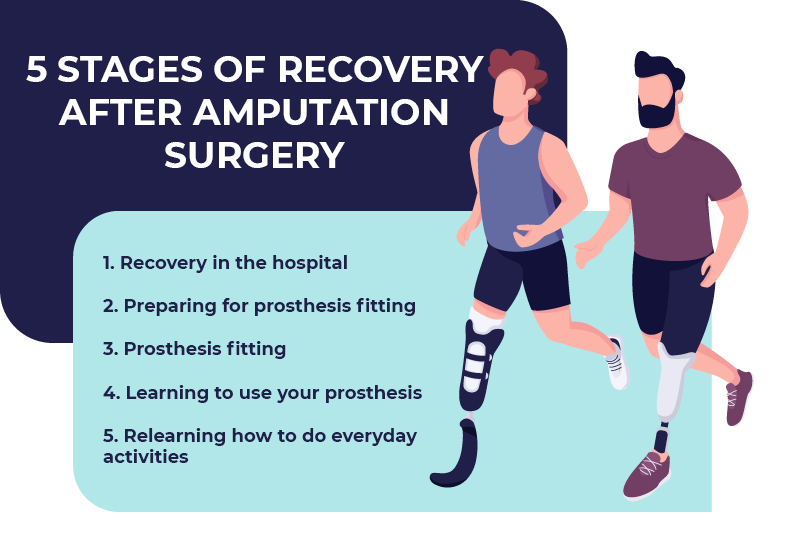 Being fit with a prosthetic leg after surgery is obviously the goal and we will give you a framework to understand the process.
Being fit with a prosthetic leg after surgery is obviously the goal and we will give you a framework to understand the process.
However, there is no such thing as a 2-3 (for example) week time frame established for many different reasons.
These different reasons include :
1.) Everyone heals at a different rate.
2.) Everyone reduces their edema (swelling) after surgery at different rates.
Here is the general process of what you can expect to happen.
- You will have the amputation surgery.

- You may require revisions to this surgery if everything is not optimal.
- You will need to then protect the limb and allow the incision to heal.
- The swelling in the residual limb will also need to reduce so a casting can occur successfully.
- After the casting, you will get something called a check socket.
- Once you “graduate” from a check socket, a more permanent socket is made that is stronger.
- Once you get the permanent socket, then the remainder of the prosthetic leg can be attached to this and you can feel like you can not start to take ownership of the prosthesis.
- Once you have the prosthetic leg however, you will need to work with therapy to optimize its use. Most people having an amputation surgery have not had a prosthesis before, so physical and occupational therapy can go a long way.
As far as a time frame goes though, many things come into play.
You could take 1-4 weeks to heal. Just imagine bearing weight on an incision line that is not ready to go. That would set you back potentially and nobody wants that if the process is rushed.
People who smoke, individuals with diabetes or other secondary issues might heal at a slower rate. All of this factors into the fitting process.
Things you can do to help yourself get fit with a prosthesis in a timely manner include :
1.) Wearing your shrinker on a regular basis when the physician permits. It is a task to wear one of these but it is for a good reason. Some people work with the compression garment and know it is important. Others do not wear it regularly and blame the garment. 
2.) Monitor your incision line regularly for any signs of infection. Redness that looks to be problematic needs to be communicated to your clinical team as soon as possible.
*We hope this information has helped you to understand the process is different for everyone and a specific time frame is not always accurate. We hope you are on the low end of the time spectrum but everyone is different.
Do check out our other blogs on prosthetics as you might find them very helpful!
Best of luck.
